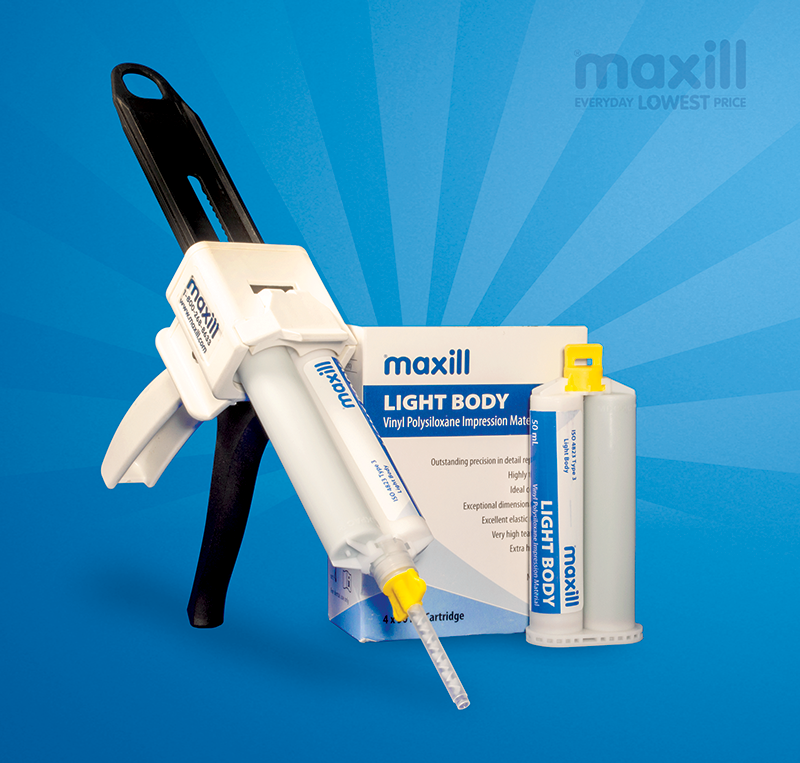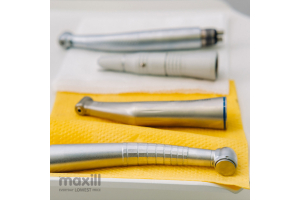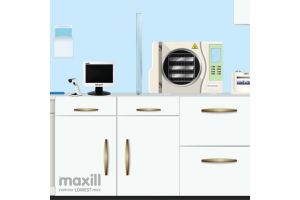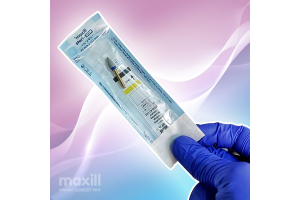What is Impression Material?

Dental impression materials have evolved significantly over the years. In this article, we will discuss the different types of impression materials commonly used in dentistry, including polyvinyl siloxane, polyether, agar hydrocolloid, and alginate hydrocolloid, along with a brief history of their development.
Dental impression materials are an essential component of restorative dentistry. They are used to create an accurate replica of a patient's teeth and oral structures for the fabrication of dental restorations or prostheses.
The 3 Types
There are three types of impression materials: preliminary, final, and bite registration.
Preliminary impressions are used to create a rough model of the teeth and oral structures for diagnosis and treatment planning.
Final impressions are used to create an accurate and detailed model of the teeth and oral structures for the fabrication of dental restorations, such as crowns and bridges.
Bite registration impressions are used to record the relationship between the upper and lower teeth and are critical for creating accurate occlusal surfaces on dental restorations.
When it comes to taking dental impressions, there are a variety of materials available to the market. Each type of material has its own unique set of characteristics, allowing dentists to have the appropriate type of material for an array of dental procedures.
What Do Practitioners Look For In An Impression Material?
There are a few key characteristics that practitioners look for.
- Excellent detail reproduction
- No distortion when removed from the mouth.
- Good tear strength/elasticity
- Biocompatible/non-toxic/acceptable tastes and smell
- Longer working times/shorter setting times
- Viscosity- some impressions require less or more viscous materials.
- Thixotropic- meaning the material flows well under pressure but hold shape once pressure is no longer applied.
- Hydrophilicity- the materials affinity to water, maximizing contact when applied.
What Are The Different Types Of Impression Materials?
Here’s a short list of the different types that are used.
Polyvinyl Siloxane
Polyvinyl siloxane was first introduced in the 1970s as a new type of impression material. It quickly gained popularity due to its excellent accuracy and dimensional stability. Since then, various modifications have been made to improve its properties, such as increasing its tear strength and reducing its viscosity. Today, it is one of the most commonly used impression materials in dentistry. It sets through a platinum-catalyzed addition reaction and produces a highly detailed, dimensionally stable impression.
Polyether
Polyether was first introduced in the 1960s as a new type of elastomeric impression material. It is known for its high tear strength and dimensional stability, making it suitable for making accurate impressions of prepared teeth and implant sites. Since its introduction, polyether has undergone various modifications to improve its properties, such as reducing its viscosity and increasing its working time. It is less viscous than polyvinyl siloxane, making it more difficult to handle, but it can capture fine details in impressions. Polyether is suitable for making impressions for crowns, bridges, and partial dentures.
Agar Hydrocolloid
Agar hydrocolloid was the first impression material used in dentistry, introduced in the late 1800s. It was made from seaweed extracts and set by cooling, forming a gel. It was highly accurate, but it had poor dimensional stability and a short working time. Since then, agar hydrocolloid has been largely replaced by other impression materials, but it is still used today for some applications, such as making impressions for partial dentures, study models, and wax patterns. It is a reversible hydrocolloid, meaning it could be altered return to its original shape.
Alginate Hydrocolloid
Alginate hydrocolloid is the most commonly used preliminary impression material in dentistry today, introduced in the 1940s. It is an irreversible hydrocolloid that sets by chemical cross-linking and produces a relatively accurate impression of teeth and soft tissues. Alginate is suitable for making diagnostic casts, night guards, sports guards, and orthodontic appliances. Over the years, various modifications have been made to improve its properties, such as reducing its setting time and improving its dimensional stability.
Conclusion
In conclusion, selecting the right impression material is essential for fabricating accurate dental restorations, prosthetics, and appliances. Dental supplies such as polyvinyl siloxane, polyether, agar hydrocolloid, and alginate hydrocolloid are commonly used for making impressions in dentistry. Each material has its advantages and disadvantages, and the dental practitioner should select the most appropriate material based on the clinical situation and the required accuracy and detail of the impression. By carefully selecting, handling, and using impression materials, dental practitioners can ensure the accuracy and quality of their dental restorations.







